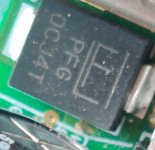I'm staving off buyer remorse....
Back me up here.
I just put an order for a Kweld, KCap, Ksupply and a HSTNS-PR01 - HP 850 to 1000 -Watt supply.
Its a BIG chunk of change for a guy who has NEVER spot welded a battery.....
"Buy once cry once" right?
In the past I have spent far too much time trying to reinvent a cheaper solution to the problem. This thread has convinced me that there is simply no better way to build a pack. my reasons are:
-supply and caps will get rid of delays
-no high amperage Lipos, I hate them because I wont use them for anything else and would likely neglect the care they need, and they would become a fire hazard
-probably the biggest reason is that this is "straight from the source", I want the designer to make a bit of coin, selfishly because if he does then there may be more good products from him in the future (Tantus if you are listening a nice LCD and controls on the supply.........)
-NOT supporting knock off companies that try to copy and pass off goods they don't truly understand
This set up will set me back about $1000 cdn all in. A huge sum of cash for me.
I have a LUNA Wolf battery that died after 185 cycles, it set me back $800 cdn, I actually have two, so I am in for $1600. My intent is to commute and that $/km ratio sucks, $0.15/km for the Wolf that got me 4500km in two years.
Soooo. I ordered the cells from Battery Hookup, 120 cells for $300cdn, add in the $1000, and another $100 for a bms, and I can do two batteries for $1400cdn....... $1500 including incidentals. For a couple batteries that are rated for 2000cycles.
I hope its a wise investment......
If I can use the powersupply and the Ksupply module to anodize an aluminum case I'll really be able to wring the value out of this.


